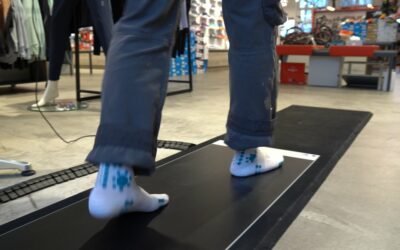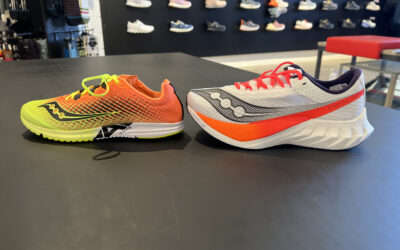What you should know about swimming in open water and the use of wetsuits: We have compiled the most important questions and answers on the topic for you.
How is swimming in the pool different from swimming in open water (lake, river)?
In the pool you swim in a “controlled” environment, quasi under laboratory conditions. In contrast to open water. This takes place in the great outdoors. This means that the conditions are always different (temperature, wind/waves, currents, light). You have to orient yourself (direction) and always be attentive (boat traffic, other swimmers). In many cases, you don’t see any ground beneath you, let alone any lines. In the river, the current conditions are added. An elementary knowledge of the behaviour of watercourses is indispensable in order to be able to enjoy river swimming.
The swimming technique can be slightly different in that you regularly have to look forward after a few strokes for orientation. In addition, crawl breathing on both sides is beneficial to keep an eye on your entire environment. In the case of breast stroke, orientation is much easier.
So there are some challenges waiting for you in Open Water. For this you will be compensated by a great nature experience. And all this without chlorinated water, overcrowded lanes and inappropriate opening hours.
In the pool you can also prepare for the Open Water: Practice orienting yourself by consciously looking forward every 5-7 strokes for a length or two. Practice the rhythm changes of the competitions by swimming intervals. Practice water shadow swimming with colleagues (i.e. swimming directly behind the person in front of you), overtaking and sometimes a mass start. Even if the competition distances are up to 3.8 kilometers, the form of interval training is still preferable in the pool and not recommended to simply swim back and forth for hours at the same pace.
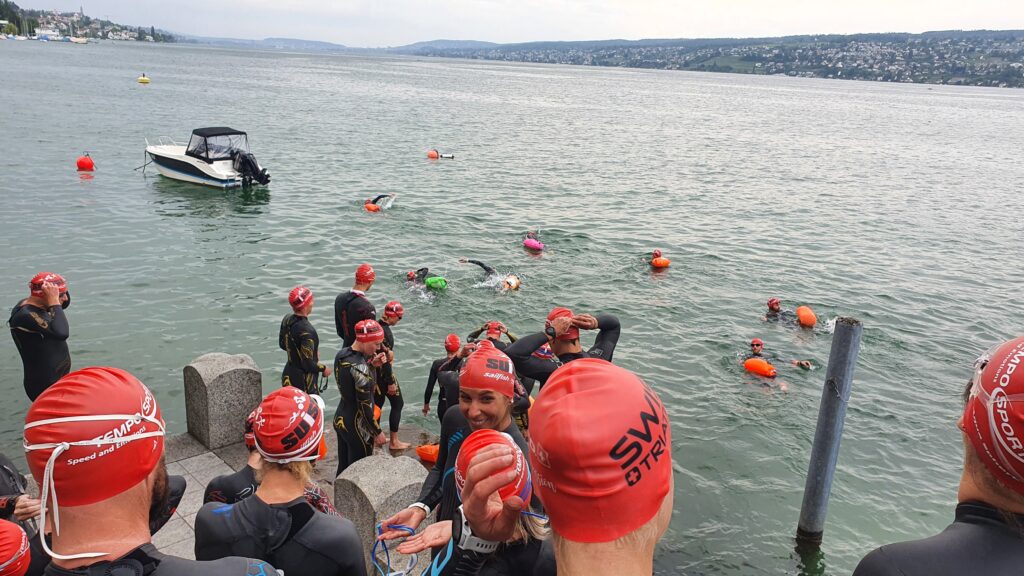
Do I need special equipment for open water swimming?
In principle, you do not need any other equipment than in the pool. However, for safety reasons, we recommend wearing a bright swimming cap and carrying a bright buoy. As a swimmer you are otherwise almost unrecognizable, especially in some waves. There are also special Open Water swimming goggles. These offer a better view and seal particularly well, so that no water gets into the goggles even at longer swimming distances. A tint of the glasses is always recommended (except in rainy weather), the water reflects the sunlight similar to snow and is very bright even when the sky is overcast.
Is swimming in open water dangerous?
Like any sport practiced in the great outdoors, open water swimming is never without risk. But if you follow these principles, you can eliminate most risks:
– Wear a bright swimming cap, carry a buoy
– Don’t swim alone whenever possible
– Do not stray too far from the shore (without a boat escort)
– Avoid port entrances and always pay attention to scheduled shipping
– In case of storm warning or thunderstorm do not enter the water (or leave the water immediately)
– Wearing a wetsuit massively increases your safety
– Adapt training distances to your level and conditions (temperature, wind)
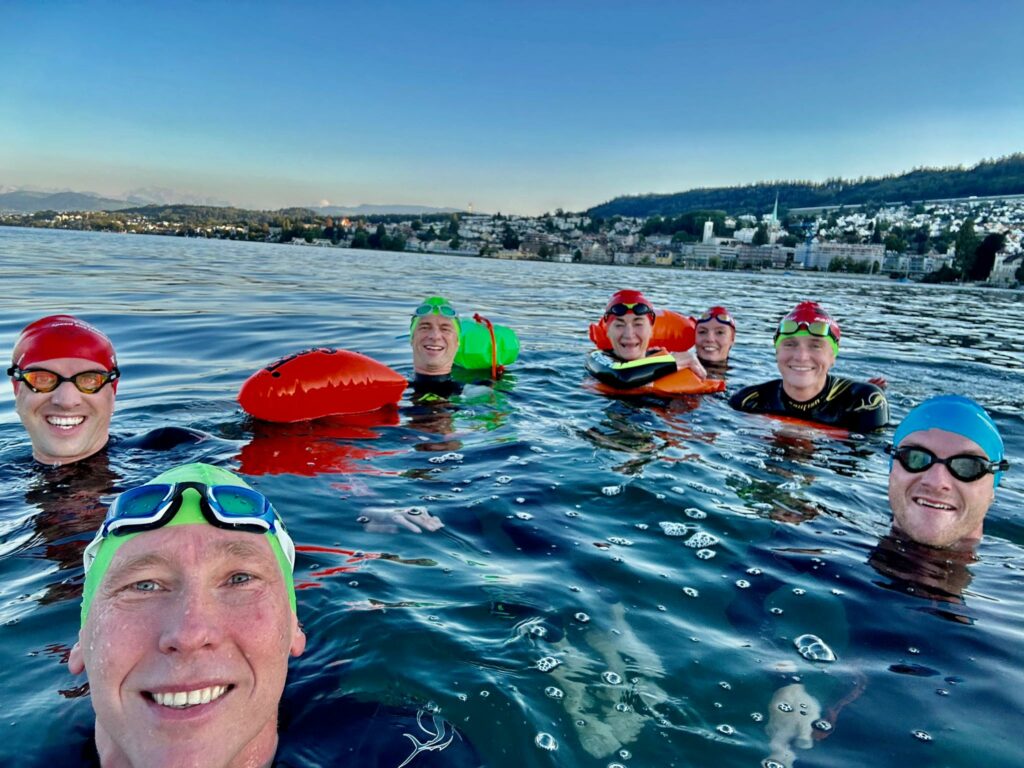
What do I need to know for swimming in triathlon competitions?
While in the past (almost) all triathlons started with a mass start, today the wave start or even individual start has become more and more popular. Nevertheless, you have to expect that you will have other participants in front, behind and next to you on the entire swim course. This can also be a big advantage, because behind another person you can save a lot of energy similar to cycling in the water shade. But please, without always hitting the person in front of you on the legs. In a mass start, we recommend the less experienced triathletes to swim defensively and not to line up at the very front. It is also important never to stop in a crowd. Because if you stop suddenly or reduce your speed a lot, then everyone behind you swims over you. If you’re struggling to find the rhythm, then swim a bit to the edge (or start there) and stay out of the biggest fray. Important to know: Especially in mass start triathlons, people usually swim off much too fast. Everyone wants to “swim freely” and find shelter in a “good group”. They start like the fire brigade. You should practice these rhythm changes in pool training so that you do not hyperventilate even at a (temporarily) high pace. Like everything, open water swimming is a matter of practice. Therefore, swim in the lake as often as possible as soon as the temperatures allow. It is also advisable to take part in a guided open water training to get first-hand tips and tricks and to practice in a group.
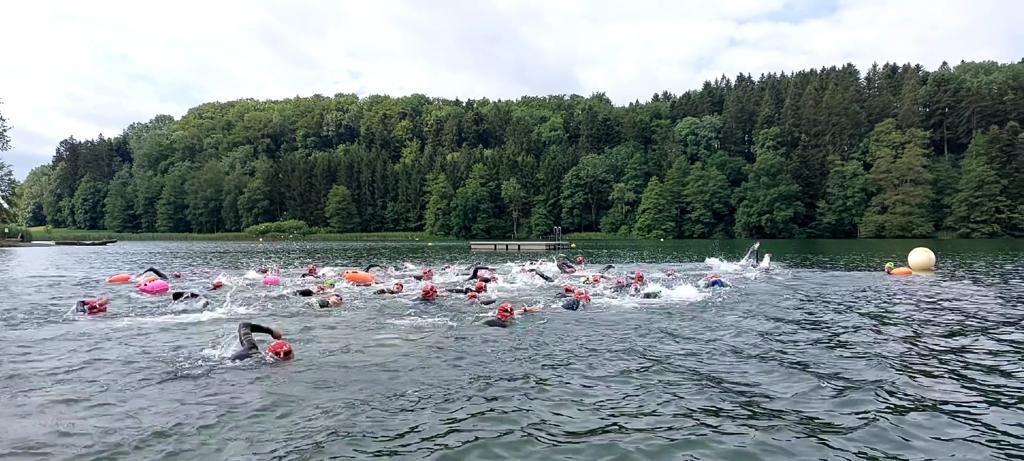
Is it advisable to wear a wetsuit?
In open waters you can swim very well without wetsuit. This also applies to competitions.
However, a wetsuit offers some advantages:
- Cold protection
- Better buoyancy
- And therefore also a significantly increased safety
Depending on the swimming distance, the wearing of a wetsuit may be mandatory (low temperatures) or prohibited (high temperatures) during competitions. Once the use is approved, most triathletes choose to wear a wetsuit, as this is much faster (saving 10 seconds or even significantly more on 100 meters, depending on the level).
Important to know: Swimming wetsuits are very specialized products that are optimized for swimming. Sure, you can also swim very short distances with a surfsuit or cheap neo from the discounter (attention: elbows and knees must be covered with neo-mandatory). However, a specific swimming wetsuit is the much better choice, as it is very thin in the necessary places (armpits/shoulders), has a particularly flexible neoprene and a very low-resistance surface. In addition, it provides buoyancy in exactly the right places, so that you can swim with the optimal water position. There is usually the possibility to rent a swimming wetsuit for a competition at triathlon shops, e.g. at Tempo Sport.
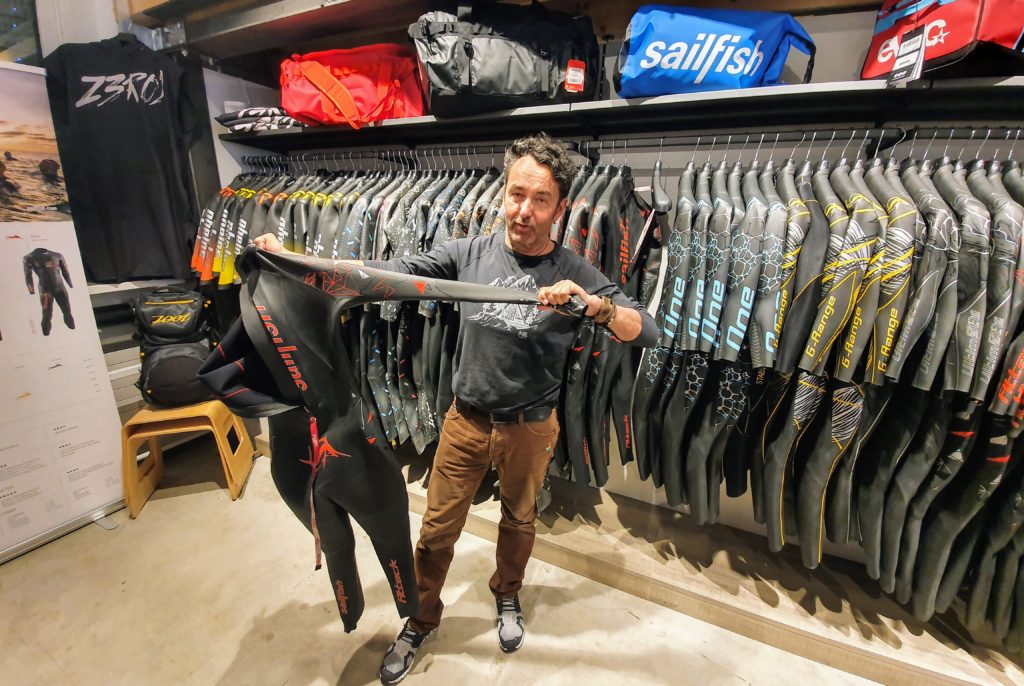
What needs to be considered with wetsuit?
In addition to the above points, you should note that the wetsuit fits perfectly everywhere and fits tightly enough. The manufacturers all have their own cut. In addition, there are many different sizes. In other words: Be sure to try it on before buying. Preferably in a specialist shop and/or at a wetsuit test swim, the assessment of the experts on site is very important. A wetsuit lasts for several years with normal care and use.
More detailed tips and tricks for wetsuits can be found HERE.

